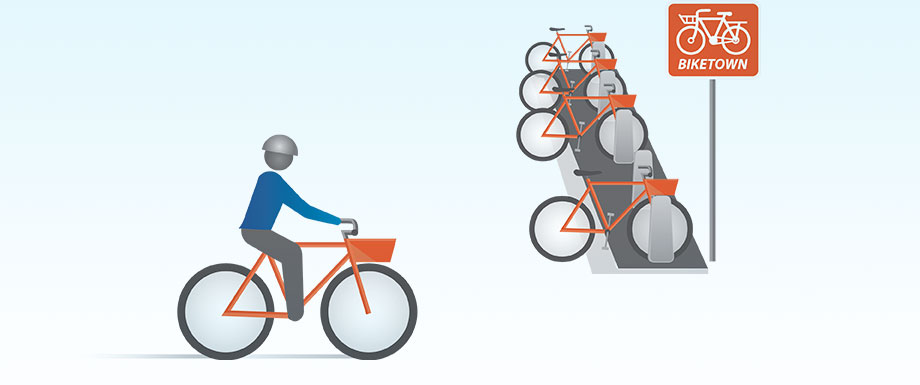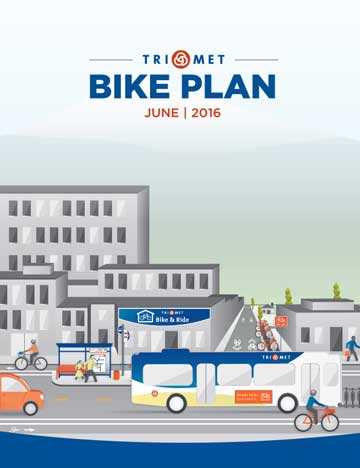
TriMet Bike Plan
We’re making biking to and from transit stops easier and safer for everyone.
We’ve created the TriMet Bike Plan — a roadmap that will help guide future investments in biking infrastructure and amenities. This includes improving bike access to transit stops, expanding parking options and accommodating bikes onboard buses and trains.
The goal of the plan is to make bike+transit trips easier, safer and more convenient for more people.
Draft Bike Plan Recommended Actions
Transit/Bike Interaction
Create a culture of safety and integration related to bus/bike interactions
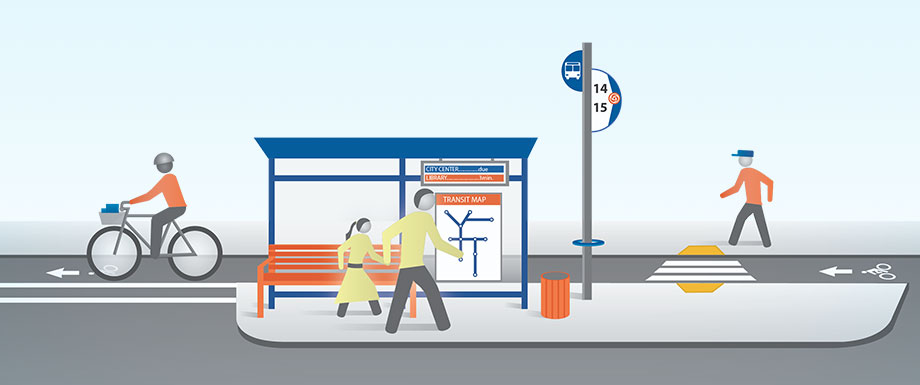
Improving bicycle access to transit, increasing bike parking and clarifying onboard policies are key pieces of the bike/transit integration puzzle. But experience around the U.S. — and the world — has shown that swift progress and lasting success depends on education and marketing as well. Strategic outreach and targeted “inreach” helps operators, users, and the general public understand how bikes and transit work together to increase mobility and improve lives. Consistent messages on safety, cooperation and the benefits of integration help create a positive culture of support that leverages on-the-ground investments.
Recommended Actions
1 Develop and implement education and outreach strategies to accompany bike access to transit policies and investments, with the goal of minimizing bike/transit conflicts.
2 Leverage Plan investments by creating a culture of support for integrating the two modes.
Bike Parking and End-of-Trip Facilities
Expand bike parking and end-of-trip facilities at MAX/WES stations, transit centers and frequent service corridor bus stops
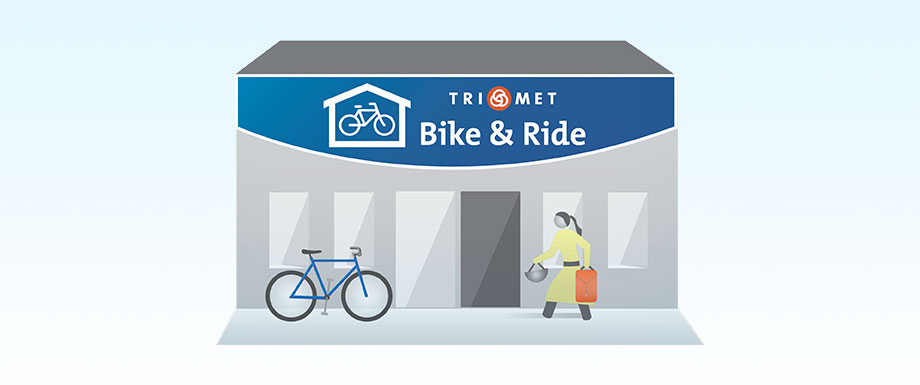
While there is general support within TriMet for providing and improving bike parking at stops and stations, actual implementation is not always consistent systemwide. Policy is needed to guide where and when to increase bike parking capacity at stations and stops, along with design guidelines to ensure that parking is well-located, attractive and secure. It is also important to address the lack of systemwide data on the adequacy of bike parking, and to develop a consistent means of gaining user input to help inform bike parking investments. Finally, over the course of developing the Plan, many stakeholders noted the inconsistent policy of charging bike riders for secure parking, while offering free automobile parking.
Recommended Actions
1 Continuously and programmatically address bike parking deficiencies.
2 Ensure state-of-the-art design for a wide range of bike parking types at stops and stations.
3 Engage current and potential users in analyzing the need for additional bike parking and end-of-trip facilities.
4 Ensure bike parking payment policies are consistent with regional and agency goals to encourage the integration of bicycling and transit.
Bikeway Access
Coordinate with partner agencies regarding bicycle access to transit stops and stations
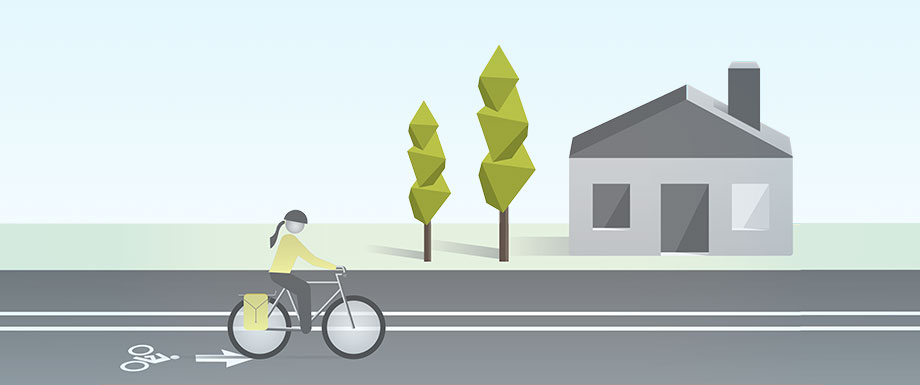
The current regional transportation policy requires local jurisdictions to plan for bike (and pedestrian) access to transit in their TSPs, and TriMet routinely participates in local TSP and other planning processes. However, ongoing planning coordination would be strengthened by more defined processes and consistent design guidelines. TriMet coordination with local agencies on major TriMet capital planning efforts is robust, resulting in significant bike improvements as part of high capacity transit projects. Ongoing coordination between TriMet and local jurisdictions during their project development for local and smaller TriMet capital projects, however, is less consistent. These ongoing system upgrades present an opportunity to improve bicycle access to transit by mutually leveraging TriMet and local jurisdiction investments. New TriMet policies should emphasize those coordinating procedures, prioritize bicycle access projects, and potentially set aside a funding source (even if limited) to help bridge gaps in local projects near transit.
Recommended Actions
1 Integrate bike access priorities from the Plan into local and regional plans and programs for funding.
2 Ensure consistent policies for bike facility design and operations.
3 Leverage Metro’s Regional Active Transportation Plan and Regional Transportation Functional Plan to achieve additional funding for bicycle access to transit projects.
Onboard Vehicle Storage
Expand capacity for on-board vehicle storage
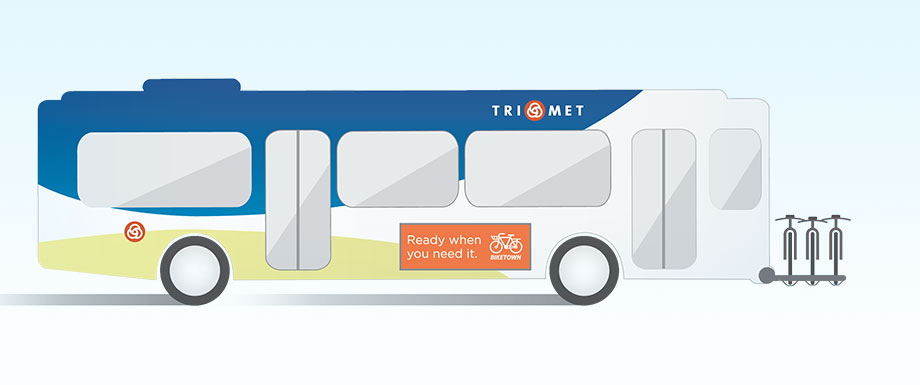
As bicycle use of the transit system increases, the need for clarity around onboard policies has increased as well. Operators, bicycle riders and the general public all identified this as an area for policy and procedure clarification.
In addition to widely understood and consistently applied procedures, there is a growing need for more onboard bike capacity on both buses and MAX trains.
Recommended Actions
1 Bus onboard policies should be clearly and consistently applied, with the goal of minimizing inconvenience and uncertainty for bicycle riders while ensuring safe conditions for all users.
2 MAX onboard policies should be clearly and consistently applied, with the goal of minimizing inconvenience and uncertainty for bicycle riders while ensuring safe conditions for all users.
3 Continuously and programmatically address the need for additional onboard accommodation throughout the TriMet system
Monitoring Progress
Measure success and invest in the data and tools needed to monitor progress
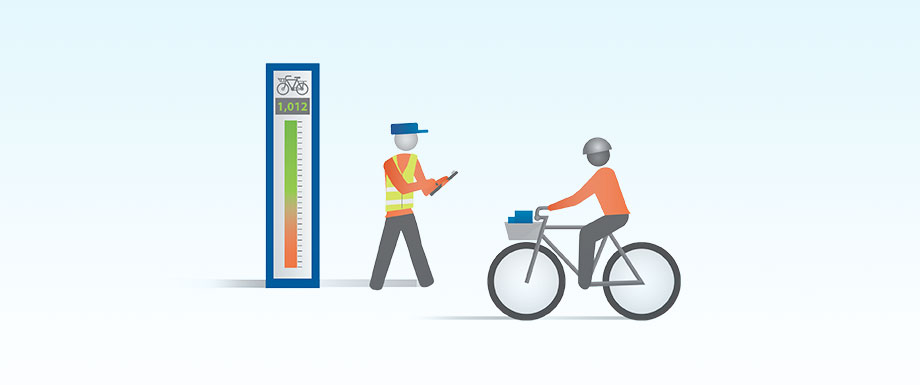
As data on TriMet system bicycle use is currently incomplete, one of the major challenges identified in the Plan is improving data collection and analysis to monitor progress and drive toward successful outcomes.
Recommended Actions
1 Identify existing policies and establish a baseline against which to measure progress.
2 Collect bike related data regularly.
3 Establish clear targets and performance measures for bikes and transit with measurable goals (lane miles, number of stations, amount of funding, etc.).
4 Support opendata platforms that improve interagency coordination.
5 Provide opportunities for TriMet customer and potential customers to provide experiential feedback.
More About the Plan
We’re working to grow our network of buses and trains while making your ride smoother, safer and more reliable.
